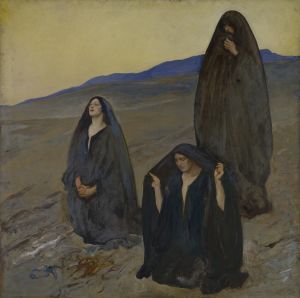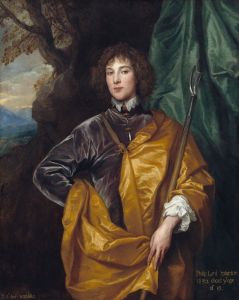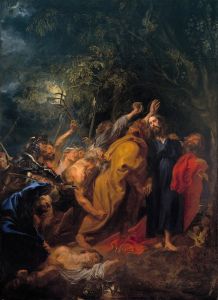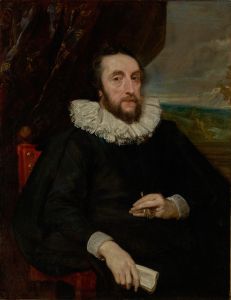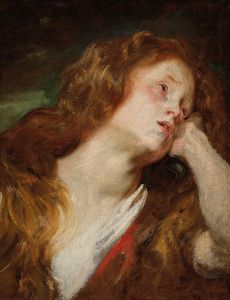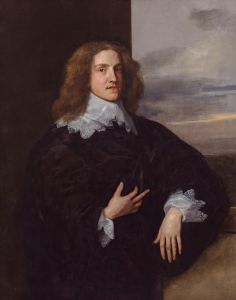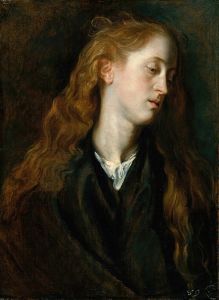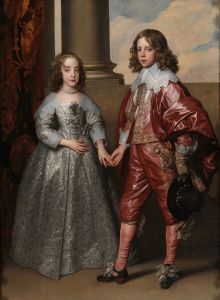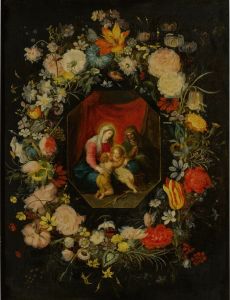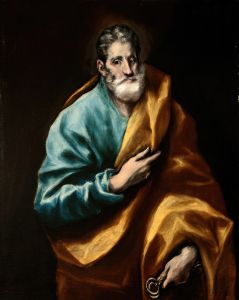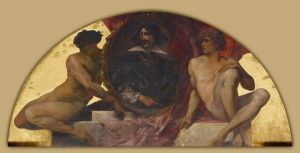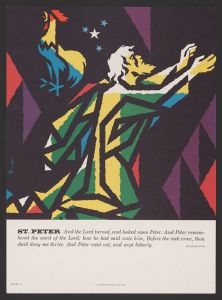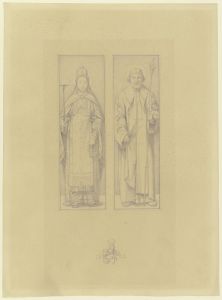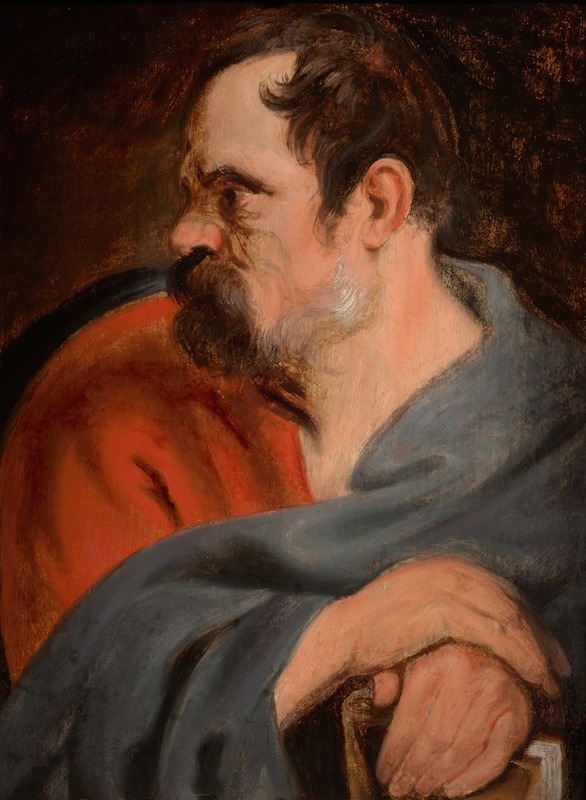
Saint Matthias
A hand-painted replica of Anthony van Dyck’s masterpiece Saint Matthias, meticulously crafted by professional artists to capture the true essence of the original. Each piece is created with museum-quality canvas and rare mineral pigments, carefully painted by experienced artists with delicate brushstrokes and rich, layered colors to perfectly recreate the texture of the original artwork. Unlike machine-printed reproductions, this hand-painted version brings the painting to life, infused with the artist’s emotions and skill in every stroke. Whether for personal collection or home decoration, it instantly elevates the artistic atmosphere of any space.
"Saint Matthias" is a painting by the renowned Flemish Baroque artist Anthony van Dyck. Van Dyck, who was born in 1599 in Antwerp, was a prominent figure in the 17th-century art scene and is best known for his portraits and religious works. He was a leading court painter in England and a significant influence on the development of Baroque art in Northern Europe.
The painting "Saint Matthias" is part of a series of works depicting the apostles, which van Dyck created during his career. These works are notable for their expressive realism and the artist's ability to convey the spiritual and emotional depth of his subjects. Van Dyck's skillful use of color, light, and composition in these paintings reflects his mastery of the Baroque style, characterized by dramatic intensity and a focus on the human figure.
Saint Matthias is traditionally recognized as the apostle chosen to replace Judas Iscariot following Judas's betrayal of Jesus and subsequent death. According to the Acts of the Apostles in the New Testament, Matthias was selected by casting lots among the disciples. He is often depicted in Christian art holding an axe or a halberd, which are symbols associated with his martyrdom.
In van Dyck's depiction, Saint Matthias is presented with a sense of dignity and solemnity. The artist captures the apostle's contemplative nature, emphasizing his role as a steadfast follower of Christ. The painting likely features van Dyck's characteristic use of chiaroscuro, a technique that employs strong contrasts between light and dark to create a sense of volume and three-dimensionality.
Van Dyck's series of apostle paintings, including "Saint Matthias," was created during a period when religious art was highly valued for its ability to inspire devotion and convey theological themes. These works were often commissioned by churches or private patrons who sought to express their faith through art. Van Dyck's ability to infuse his religious subjects with a sense of humanity and emotion made his paintings particularly resonant with viewers of his time.
The exact date of creation for "Saint Matthias" is not definitively documented, but it is believed to have been painted during van Dyck's early career, possibly in the 1620s, when he was actively producing religious works. The painting is part of a larger body of work that showcases van Dyck's versatility as an artist and his deep engagement with religious themes.
Today, Anthony van Dyck's paintings, including "Saint Matthias," are held in high regard for their artistic merit and historical significance. They are studied for their technical brilliance and their contribution to the Baroque movement. Van Dyck's influence extends beyond his lifetime, as his approach to portraiture and religious art set a standard for subsequent generations of artists.
"Saint Matthias" by Anthony van Dyck remains an important piece in the study of Baroque art and continues to be appreciated by art historians and enthusiasts alike for its beauty and spiritual depth.





